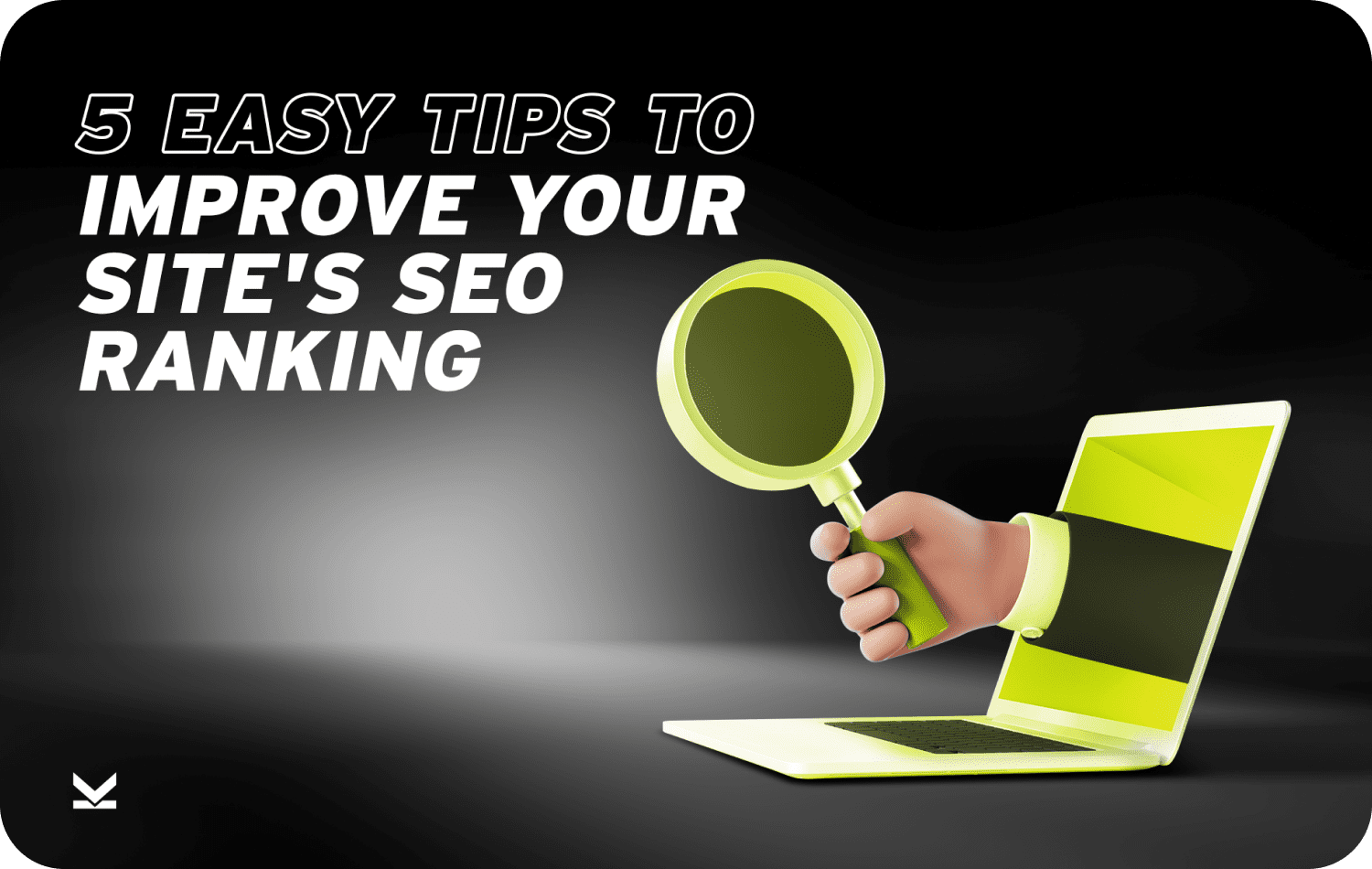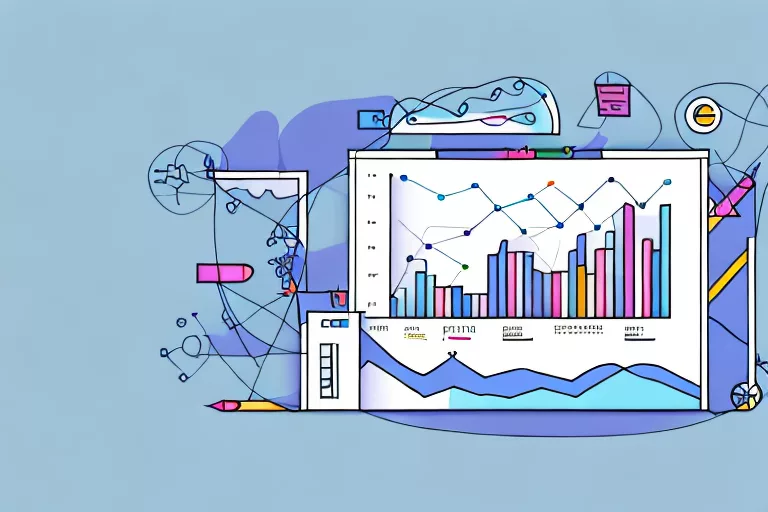Launching and maintaining a website means more than periodically looking at how much profit you’ve made and way more than an occasional glance at how many visitors you’ve had the past month. While both are important, many other metrics can help you assess your business’s overall health and make informed decisions when needed. But at the same time, there can be too many metrics you can analyze. Enough that keeping track of everything would quite possibly be impossible, at least not in a sustainable way. With existing products and services to manage and new products to plan and launch, wasting your time worrying about unnecessary metrics can take you away from spending more time on important things.
Unfortunately, and as with most things in marketing, there’s no one size fits all set of website metrics. It would depend on your business model and the specific goals and objectives you want to achieve and keep track of.
Fortunately for you, we’ve compiled a list of key performance indicators found in your website to take note of to evaluate your website’s performance. To help you out, we’ll also include a few tips to increase your metrics!
Before we start with specific metrics to keep an eye on, you might find it helpful to divide the categories. In this post, we’ve taken it upon ourselves to divide these metrics into 4 broad categories:
- Traffic
- User Behavior
- Conversion
- SEO
This way, you can focus on specific metrics for a specific goal. For example, suppose one of your objectives is to increase customer engagement; you can focus on engagement and customer behavior metrics at least until you check on the progress for the next objective.
Let’s dive in!
Traffic Metrics
These metrics will help you know where your traffic is coming from and who they are. This data will help you analyze the numbers in context to make decisions about how you get your traffic and who you’re actually reaching.
Traffic Source
This metric tells you where your traffic is coming from. While knowing how many people are visiting your website is good and could even translate to more sales opportunities, it’s vital to contextualize this number when strategizing. This is important because it gives you an idea of the platforms affecting your traffic. Is advertising on Facebook resulting in a relevant traffic increase? Or does Instagram bring in more people? Should you still advertise on both or cut back on your ad spend on one?
Unique Visitors
This metric will tell you how many unique visitors you have on your website regardless of how many sessions each unique visitor has. It also gives you the opportunity to know which visitors or leads are warmer than others. This means that you can make more targeted efforts to convert warmer leads.
Organic Visitors
Organic traffic comes from sources you didn’t pay for, compared to search or social media ads. For example, you have a digital marketing website, and a user searches for the keyword “Website Traffic.” If you have a high search ranking for that keyword, the user will find your site on the first page and probably click on it. Or, they could also know your site already, either from having visited it or being introduced to it from somewhere else. Then, in that case, they might just directly go to your website. Keeping up with your organic traffic helps you learn if the keywords you’re using are effective or if you have good brand awareness. Not to mention, organic traffic means users are inching along your customer journey without you paying for it.
Tips for Increasing Your Traffic:
Tip #1: Run Paid Media Efforts
Organic traffic may be ideal, but it can be difficult to get. That’s why most companies invest in paid media efforts. Did you know the digital advertising market is valued at $602.25 billion this year? This is a testament to how much money businesses invest in their ads. And why not? It does work! Given you’ve strategized well, done enough research on your audience, and chosen the right platform, it’s bound to turn out positive. Paid media efforts can be email marketing, social media advertising, or running ads on Google, to name a few. You can even make a marketing strategy that involves multiple strategies or even all of them.
Tip #2: Develop a Social Media Strategy
Having a social media strategy is a must these days. Social media is a free way to potentially reach a massive audience that you can hopefully sweet talk into buying your products or services. If not a direct conversion, having people see you so often on platforms they spend hours on will definitely increase brand awareness. Maybe next time they decide to buy new things, they’ll think about your first! Garnering followers will take some time, but that’s where your strategy comes into play! We have TikTok, Instagram, Facebook, and YouTube posts if you want more resources!
User Behavior Metrics
These metrics focus on how customers behave on your website and engage with your content. Your website’s performance in terms of these metrics will measure whether your content delivers what your customers need or if they are engaging enough to keep prospects on your website for a relevant period of time.
Bounce Rate
The bounce rate measures how many visitors leave the site without viewing another page. A high bounce rate means your website isn’t engaging or relevant enough to warrant going to another page. However, you could see a better and more accurate picture if you supplement your bounce rate with the next metric.
Average Session Duration
This metric measures the average time visitors spend on your website per session. A session or website visit refers to user interactions with your website within a given time frame. For example, if a user opens the Strikepoint Media website through one of our blog posts, reads the blog, opens another page, and then exits the website, that counts for one session. If that whole process took them 10 minutes, then the session duration is 10 minutes. It’s a good metric to take note of to see if your users find your content engaging or valuable.
As mentioned in the first metric, a high bounce rate could be negative. However, if that is coupled with a high average session duration, you probably shouldn’t worry too much. Say a user opens our blog post on Email Marketing and bounces right after but has spent a whole 19 minutes reading the whole thing; we wouldn’t be too worried.
Page Views/Session
While we mentioned that a high bounce rate paired with a high average session duration isn’t too worrying, the ideal is still a low bounce rate, high average session duration, and high page views per session. Page views per session are just the average number of pages the users open when they visit your website. Having high page views per session means that users find your content engaging and valuable enough to want to know more, thus opening more pages.
Tips for Increasing Engagement
Tip #1: Use heat mapping to observe user behavior
Heat mapping is valuable for knowing how your customers interact with your page. Are there specific corners of your page your users spend a lot of time on? Which buttons are getting the most clicks? How about the least? You can use services such as Hotjar, which provides heat mapping services and other digital marketing tools. Having this data can help you improve your pages and make data-driven decisions on how to do tip #2! For example, we had a client who installed heat mapping on their site and found that A TON of visitors were clicking images that didn’t link anywhere! So what did we do? Made the images clickable to take them to the desired page.
Tip #2: Improve UX and Optimize Landing Pages
Optimizing your landing pages means ensuring users get value right when they open them. You want to entice them, convince them to stay. You don’t want them to take one look at your page and bounce. If you have good content, you don’t want them bouncing because the page isn’t intuitive, e.g., confusing navigation or broken links.
Google Analytics also provide data for sessions by device type. You can take advantage of this data by giving particular attention to devices that are used the most often or improving the experience on devices that aren’t used as much. For example, if you find that many of your customers visit your website through mobile, it would do you a lot of good to ensure that the user experience on mobile devices is optimized.
Conversion Metrics
No matter how many people visit your website or how “good” your website is in keeping said visitors, conversions are still the main goal. A conversion can look very different for each business. It can mean a new lead, subscriber, or sale. However, these metrics will help you evaluate if your website can successfully achieve your main goal, regardless of the type of conversion.
Visit-to-Signup/Visit-to-Lead
This metric tells you how many of your visitors sign up for your list or complete whatever form you’re hoping they fill out. Even if your website does a good job of inviting traffic, many sessions without a sign-up or a lead to show for them aren’t really worth much. Having your visitors sign up or give their contact information to become leads would mean that you’ve just nudged them along the next phase in the customer value journey. You need to know if the effort of optimizing your landing pages and providing quality content would give you leads and, in turn, an opportunity for a sale.
Sales
Visitors and an increasing number of subscribers are good indicators of website success. But let’s face it, sales are the main goal here for a lot of companies. It’s the literal pot of gold at the end of the rainbow. Evaluating your sales performance would tell you if the whole thing is working. Are you even getting a return on your investment of time, effort, and money on this website?
Cost Per Conversion
Do you know how much you spend for a visitor to get to your website? How much does it cost you before users finally buy something? Knowing your cost per conversion would help you evaluate whether you have a relevant return on your investment. This metric is used to determine marketing efforts’ effectiveness in achieving certain conversion goals or if the cost is worth that effectiveness.
Tips for Increasing Conversion Metrics:
Tip #1: Remove friction by defining your ideal customer value journey
Identifying the customer value journey would help you plan specific strategies to optimize each phase. You want to be able to nudge them along the journey to increase the chances of them actually “converting” or spending money on your products or services. You can pinpoint friction points in specific phases in the journey and make your solutions more targeted. Where do they drop off? Where do they hesitate? Don’t know how to make a customer value journey? We got you! We recently posted an article on the Customer Value Journey.
Tip #2: Add a live chat option
Speaking of removing friction, there’s nothing like having someone answer your questions in real-time. It’s the salesperson in-store, except less annoying, and you get to start the conversation. It gives your customers a chance to ask questions and for you to clarify concerns to convince them to buy your product or service. This is especially helpful for customers who are on the fence.
SEO Metrics
Did you know 75% of users never even get to the second page of search results? This means optimizing your website to be ranked on the first page of Google is crucial. While you can view most other metrics on Google Analytics or similar platforms, data related to SEO differs because you have to pay to access this data. Semrush is an SEO tool commonly used by digital marketers for optimizing their websites.
Search Engine Ranking
Your search engine rank refers to where you see your website on a search results page. For example, if a user searches for “Christmas decorations” on Google, Good Housekeeping comes first. This means that the website is ranked high, at least in that keyword. Knowing your search engine rank is important because it greatly affects your visibility to new prospects.

Domain Authority
This metric gives you the measure of your website’s effectiveness in search engines. This metric was created by Moz, which gives websites a score between 1-100, with 1 being the least effective and 100 being the most effective. Knowing your domain authority helps you evaluate your website’s performance in search engine rankings and to strategize and plan for improvements.
Tips for Optimizing Your Website For Search Engines:
Tip #1: Engage in link-building activities
Link building is the process of getting other relevant websites to link back to your content. It shows search engines that you provide valuable information and is relevant enough for these other websites to reference. The number and the quality of your backlinks also help search engines determine the rank you appear in on search engine page results. Link building can be done in various ways, detailed in one of our recent blog posts on Link Building!
Tip #2: Keyword Research
Keyword research means finding keywords you want to rank for on search engines. The idea behind this is quite simple; you want to know what the audience wants to read about or what they’re searching for. For example, if you had a blog, you wouldn’t want to waste time and effort writing a post no one is interested in reading. In short, you need to find what the audience demands. You need a good understanding of the industry or niche you want to break into. You start with “seed keywords,” which will serve as your starting point. You can also use keyword research tools to help significantly reduce your load.
Tip #3: Update your content regularly
When you regularly update your content, it signals search engines about the relevancy of your website. While posting every day might be unsustainable, keeping a regular posting schedule would be better. Regularly posting relevant content would also help increase your authority and hopefully increase your traffic. So, it’s a win-win!
Having and managing a website is a lot of work! Especially in the beginning, with so many technical and content-related concerns for a successful website launch. KPIs are a must! They give you evidence in the form of numbers, and numbers don’t lie. You can objectively evaluate your strategy and modify it when necessary. However, choosing from all the metrics available to you can be overwhelming. It’s important to keep your specific goals in mind and see what numbers will help you see your progress on specific goals.




